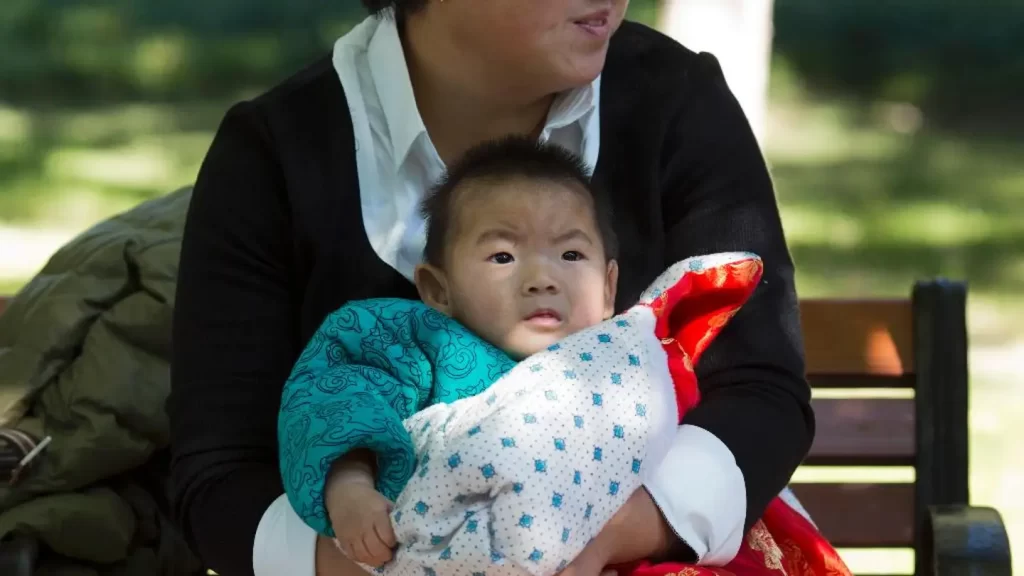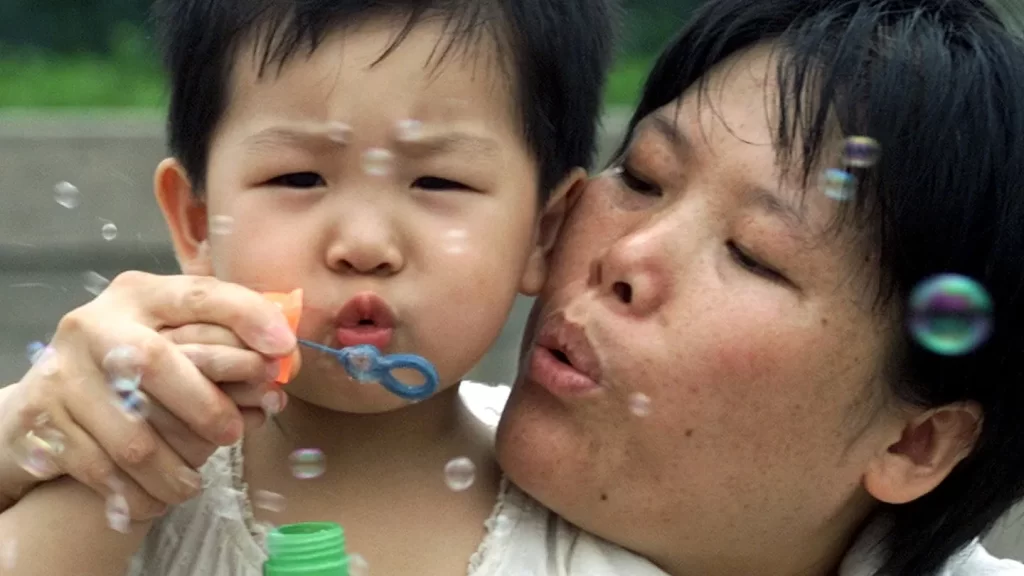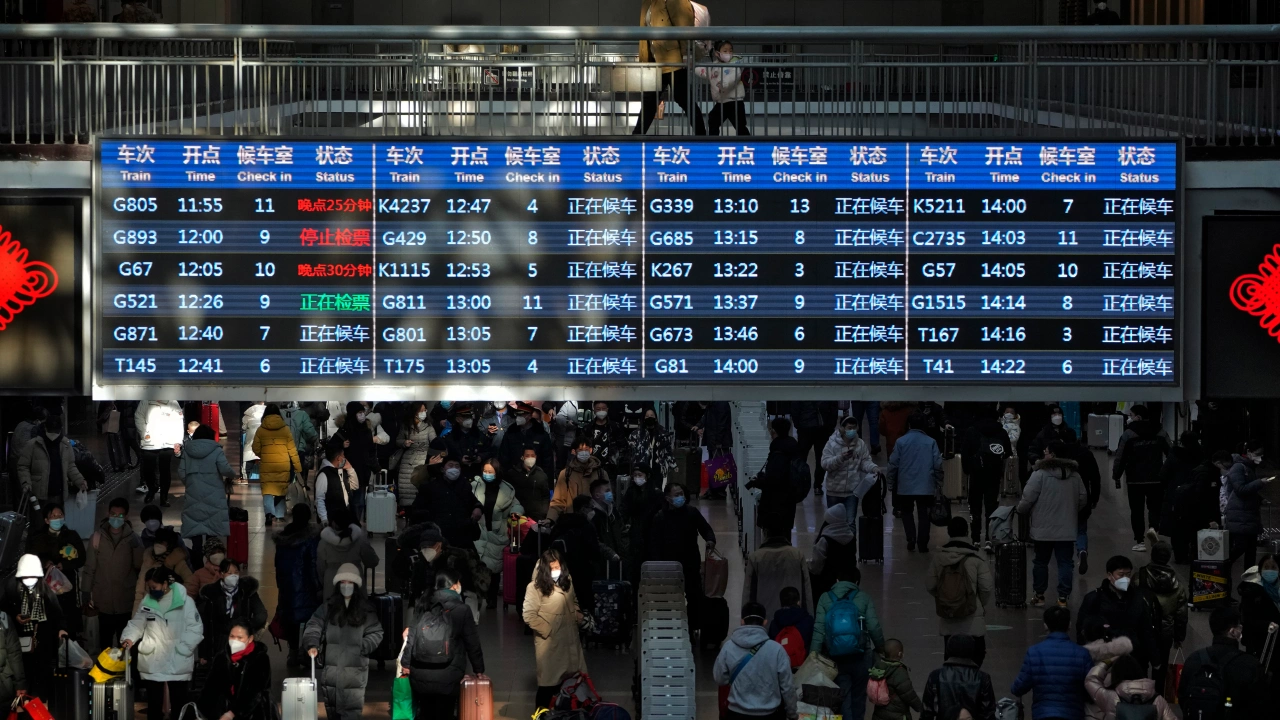China Records 1st Population Drop in Decades as Births Rates Plumate
BEIJING (AP) — China’s population shrank for the first time in decades last year as its birthrate plunged, official figures showed Tuesday, adding to pressure on leaders to keep the economy growing despite an aging workforce and at a time of rising tension with the U.S.
Despite the official numbers, some experts believe China’s population has been in decline for a few years — a dramatic turn in a country that once sought to control such growth through a one-child policy.
Many wealthy countries are struggling with how to respond to aging populations, which can be a drag on economic growth as shrinking numbers of workers try to support growing numbers of elderly people.
But the demographic change will be especially difficult to manage in a middle-income country like China, which does not have the resources to care for an aging population in the same way that one like Japan does. Over time, that will likely slow its economy and perhaps even the world’s, and could potentially keep inflation higher in many developed economies.
“China has become older before it has become rich,” said Yi Fuxian, a demographer and expert on Chinese population trends at the University of Wisconsin-Madison.
A slowing economy could also pose a political problem for the ruling Communist Party, if shrinking opportunities foment public discontent. Anger over strict COVID-19 lockdowns, which were a drag on the economy, spilled over late last year into protests that in some cases called for leader Xi Jinping to step down — a rare direct challenge to the party.
BEIJING (AP) — China’s population shrank for the first time in decades last year as its birthrate plunged, official figures showed Tuesday, adding to pressure on leaders to keep the economy growing despite an aging workforce and at a time of rising tension with the U.S.
Despite the official numbers, some experts believe China’s population has been in decline for a few years — a dramatic turn in a country that once sought to control such growth through a one-child policy.
Many wealthy countries are struggling with how to respond to aging populations, which can be a drag on economic growth as shrinking numbers of workers try to support growing numbers of elderly people.
But the demographic change will be especially difficult to manage in a middle-income country like China, which does not have the resources to care for an aging population in the same way that one like Japan does. Over time, that will likely slow its economy and perhaps even the world’s, and could potentially keep inflation higher in many developed economies.
“China has become older before it has become rich,” said Yi Fuxian, a demographer and expert on Chinese population trends at the University of Wisconsin-Madison.
A slowing economy could also pose a political problem for the ruling Communist Party, if shrinking opportunities foment public discontent. Anger over strict COVID-19 lockdowns, which were a drag on the economy, spilled over late last year into protests that in some cases called for leader Xi Jinping to step down — a rare direct challenge to the party.
China’s population has begun to decline nine to 10 years earlier than Chinese officials predicted and the United Nation projected, said Yi, the demographer. At 1.4 billion, the country has long been the world’s most populous nation, but is expected to soon be overtaken by India, if it has not already.
China has sought to bolster its population since officially ending its one-child policy in 2016. Since then, China has tried to encourage families to have second or even third children, with little success, reflecting attitudes in much of east Asia where birth rates have fallen precipitously. In China, the expense of raising children in cities is often cited as a cause.
Zhang Huimin bemoaned the “fierce competition” young people face these days — a fairly typical attitude toward starting a family among her age group.
“Home prices are high and jobs are not easy to find,” said the 23-year-old Beijing resident. ”I enjoy living by myself. When I feel lonely, I can take pleasure in staying with my friends or keeping pets.”
Yi said that his own research shows China’s population has actually been declining since 2018, indicating the population crisis is “much more severe” than previously thought. The country now has one of the lowest fertility rates in the world, comparable only to Taiwan and South Korea, he said.
That means China’s “real demographic crisis is beyond imagination and that all of China’s past economic, social, defense and foreign policies were based on faulty demographic data,” Yi told The Associated Press.
The looming economic crisis will be worse than Japan’s, where years of low growth have been blamed in part on a shrinking population, Yi said.
The statistics bureau said the working-age population between 16 and 59 years old totaled 875.56 million, accounting for 62% of the national population, while those aged 65 and older totaled 209.78 million, accounting for 14.9% of the total.
It also reported China’s economic growth fell to its second-lowest level in at least four decades last year, although activity is reviving after the lifting of COVID-19 restrictions that kept millions of people at home.
Any slowdown has wider implications. China became a global manufacturing powerhouse in the early 2000s. With millions of its citizens flocking from the countryside to its cities, China’s seemingly endless supply of cheap labor lowered costs for consumers around the world for computers, smartphones, furniture, clothes and toys.
Its labor costs have already begun to rise — and changing demographics will likely accelerate that trend. As a result, inflation could creep higher in countries that import China’s products, though production may also move to lower-cost countries such as Vietnam, as it already has.
On top of the demographic challenges, China is increasingly in economic competition with the U.S., which has blocked the access of some Chinese companies to American technology, citing national security and fair competition concerns.
If handled correctly, a declining population does not necessarily translate to a weaker economy, said Stuart Gietel-Basten, professor of social science at Khalifa University in Abu Dhabi.
“It’s a big psychological issue. Probably the biggest,” Gietel-Basten said.
According to the data from the statistics bureau, men outnumbered women by 722.06 million to 689.69 million, the bureau reported, a result of the one-child policy and a traditional preference for male offspring to carry on the family name.
The numbers also showed increasing urbanization in a country that traditionally had been largely rural. Over 2022, the permanent urban population increased by 6.46 million to reach 920.71 million, or 65.22%.
The United Nations estimated last year that the world’s population reached 8 billion on Nov. 15 and that India will replace China as the world’s most populous nation in 2023. India’s last census was scheduled for 2022 but was postponed amid the pandemic.
Gietel-Basten said China has been adapting to demographic change for years by devising policies to move its economic activities up the value chain of innovation, pointing to the development of semiconductor manufacturing and the financial services industry.
“The population of India is much younger and is growing. But there are many reasons why you wouldn’t necessarily automatically bet your entire fortune on India surpassing China economically in the very near future,” he said.
Among India’s many challenges is a level of female participation in the work force that is much lower than China’s, Gietel-Basten said.
“Whatever the population you have, it’s not what you’ve got but it’s what you do with it … to a degree,” he said.
Taiwan, Kanis Leung in Hong Kong, and Chris Rugaber in Washington, and AP video journalist Emily Wang Fujiyama and video producer Olivia Zhang in Beijing contributed to this report.
by: Ken Moritsugu source
China’s population expected to dip ahead of 2025: official
China’s projected population shrink comes after the country previously had a one-child policy
China has seen its population growth decline significantly, and a senior health official says the country can expect its population to start shrinking prior to 2025.
Yang Wenzhuang, head of population and family affairs at China’s National Health Commission, said the country’s population is expected to begin declining in 2021-2025, according to state-backed outlet, the Global Times.
Birth data released Sunday revealed that new births in China last year were the lowest number in decades in several of the country’s provinces.

A senior Chinese health official says the country can expect its population to start shrinking before 2025. (AP Photo/Ng Han Guan) (The Associated Press)
Births in the central Hunan province dropped below 500,000 for the first time in nearly 60 years, the Global Times reported, adding that China’s southern Guangdong province is the only one to deliver more than 1 million new births.
China is grappling with a fast decline in natural population growth as a number of young people elect not to have children because of several factors, including the high cost of raising kids and work pressure.

Many young people have elected not to have children because of several factors, including the high cost of raising kids. (Reuters)
The Asian nation previously had a one-child policy from 1980 to 2016 amid soaring population numbers that the country believed could hurt its economy. China then raised the limit to two in 2016 and now, families are given permission to have three children.

China previously had a one-child policy from 1980 to 2016 amid soaring population numbers the country believed could hurt its economy, but the country upping the limit in recent years has not boosted population numbers. (Reuters)
However, the Chinese government changing laws to allow women to have three children has not helped the country’s population numbers. Several women have said the change in policy did not come soon enough, and they do have the financial means to support additional offspring.
Reuters contributed to this report.


